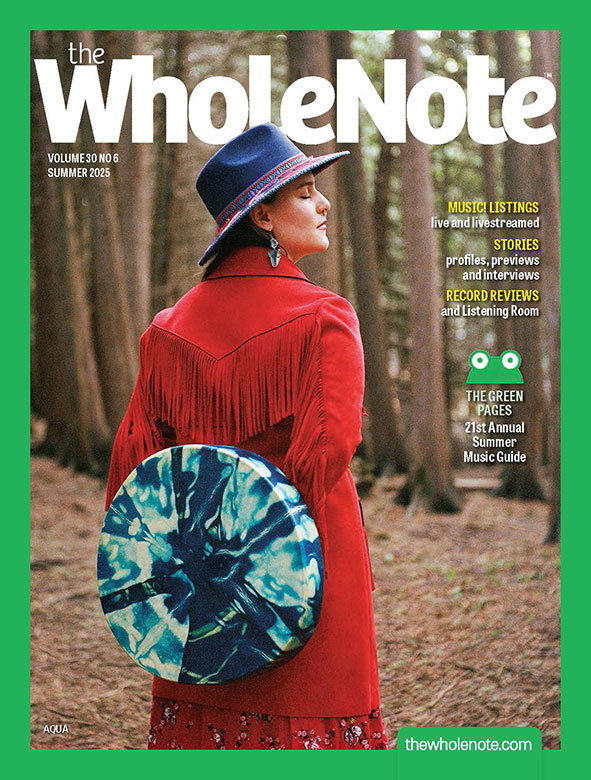Pianos Forte in November
PIANISTS FIGURE prominently in this issue of The WholeNote. Stewart Goodyear, on our cover, has been delving deeply into Beethoven: this summer he played all 32 Beethoven sonatas at the Ottawa International Chamber Music Festival. This month, he’ll grace the stage of the Royal Conservatory’s Koerner Hall on November 28, with an all-Beethoven recital.
Allan Pulker’s column opens with a look at the Chinese Cultural Centre’s Toronto International Piano Competition, which has attracted contestants from 10 countries around the world, including Canada. One of the things that’s been curiously lacking in this city is a recurring event of this sort (there was an international Bach piano competiton here back in 1985, but it was not repeated), so we can only hope that this inaugural event will be the first of many. The competition runs from November 2-8.
As Pulker notes, many other pianists have found their way into this month’s listings. In addition to those mentioned in his column, I’ll point out that there are two “Art of the Piano” recitals at Gallery 345. Contemporary programmes will be given by Vlada Mars (November 12) and Vicki Chow (December 3). See our listings for full details.
Something else that leaps out of the 600-odd listings as particularly “Novemberesque” is the abundance of musical activity on university campuses throughout Southern Ontario. November is the month when music students take to the stage to present the programmes they’ve been working on since September – so in this month’s magazine, you’ll find extensive listings for the University of Toronto and York University in the “GTA” section. And in the “Beyond the GTA” listings, you’ll find concerts at the University of Western Ontario, the University of Waterloo, McMaster, Wilfrid Laurier, Guelph, Brock and Queen’s. Many of these concerts are free – and I’m sure the students would appreciate substantial and appreciative audiences for their efforts.
November can also be a dreary month. Fortunately, there’s a slew of musical-theatre productions by community groups out there: just the thing to chase away the pre-holiday blues. In the GTA, you’ll find such feel-good shows as Meet Me in St. Louis (opening November 4), Annie (also opening November 4), not one but two productions of Oliver! (opening November 13 and 18, respectively), and The Wizard of Oz (first performance on December 1). Further afield, look for My Fair Lady in Peterborough (opening November 5); White Christmas and A Christmas Carol in Cobourg (on November 11 and 27); and Alice in Wonderland in Barrie (November 19). It’s fast and easy to find them on our website, www.thewholenote.com, by searching for “music theatre.”
We come at last to Handel’s Messiah. There was a time when this perennial favourite was anchored securely in December, but these days it’s not uncommon to to hear the Hallelujah Chorus ring out in November. Check out our website on November 10 for a special feature on Messiah performances throughout the holiday season.





